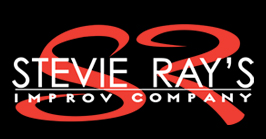Is it me, or has there been a stronger-than-usual reaction to the recent actions in Washington D.C.? Before you toss this newspaper, stop the video, or cancel whatever medium this is reaching you, don’t worry; this is not going to be like the rush of angry social media posts that have been keeping you from viewing photos of people’s children all dressed up for prom, or videos of their dog eating the baby’s food while the child laughs hysterically. But a recent survey did discover that the average worker today spends an average of two hours reading political posts on social media during the work day. Kind of makes you nostalgic for the days when people just wasted fifteen minutes hanging around the water cooler, doesn’t it?
No, I’m not going to weigh in with my thoughts on the current administration. I made an agreement with my wife not to publish anything that would result in angry mobs with torches and pitchforks gathering outside our castle. And these days, no matter which side of the debate you’re on, you can count on even the mildest opinion resulting in a feud that rivals Kylie Jenner and Blac Chyna (but seriously, did you see what Kylie posted about her? OMG!).
The division between left and right, totally engaged and completely uninterested, or slightly annoyed and obsessively furious has never been greater. There are even reports of divorces occurring because couples couldn’t reconcile the fact that their partner pulled the wrong lever in the voting booth. The implications of the current political climate, however, do run deeper than people not getting their work done because they are too busy seeing how many people Like their posts. It doesn’t matter to a business leader if an employee Unfriends someone on Facebook, but it does matter if they do it at work. How is a team supposed to work side by side to get a project done when half the team thinks the other half is either evil incarnate, or spineless snowflakes? If the cornerstone of a productive team is trust (as evidenced by about a bazillion studies), how can trust survive the realization that the person you formerly thought of as a great guy you now consider to be unethical, uneducated, narrow-minded, unreasonable, or a “sore loser.”
The answer, of course, is leadership. (Cue the Roman-style trumpets.) But this situation calls for leadership of a very specific kind, and it might not be the kind that you grew up with. One of the hallmark attitudes of the Traditionalist Generation (born roughly between 1900-1945), is the mantra, You don’t have to like your job, you just have to have one. The need to find employment, when employment was impossible to find, also led to, You don’t have to like your co-workers, you just have to work with them. Certainly, the threat to one’s livelihood would be incentive enough to quell any personal disagreements. But we no longer live in a keep your head down and do your job world, and leaders cannot simply tell employees to keep their nose to the grindstone. This approach is not only unrealistic, it is ultimately self-defeating.
One company I worked with has actually instituted a rule that no conversation in the workplace may include the topics of politics, religion, ethnicity, or even sports. Sports? “Dude, the Hope University volleyball team totally stepped over the foul line on that spike.” “That’s it. Meet me in the parking lot with your gloves on!” The no talking about sensitive issues at work rule might seem like a reasonable approach. If an issue isn’t likely to ever find a peaceful resolution, why bring it up? I am sure many families across America employed that strategy at Thanksgiving. The problem is, not talking about an issue doesn’t make it go away. You might not have said to your brother, “Please pass the mashed potatoes, you racist pig!” but you can’t hide the sentiment. Leaders who try to quash disagreement by prohibiting conversation create an environment of avoidance and resentment. On the list of qualities of productive teams, avoidance and resentment rank below apathy and irresponsibility. Essentially, taking away the right, and the responsibility, to talk about tough issues with team members is like saying, “You kids can’t play well in the sandbox. So, rather than teaching you how to play well, we’re taking the sandbox away.” Kids without a sandbox rarely blame the parent who took it away; they blame the other kid in the sandbox.
Good leaders are so because they protect team members, even if from each other. This is not a time to hide from the tough issues of the day, it is time to get in front of it. The first step is to put it out there. Don’t pretend that it only affects people outside of work. If it hasn’t been brought up yet, be the person to bring it up. The next step is to lay out expectations. Employees need to know that no matter how they voted, or if they voted, or how they feel about the issues at hand, these are our expectations when you step through our doors. Employees need to know that you don’t want them to just put their heads down and work, you want them to talk to each other. People don’t have to agree, but they have to disagree the right way. And, as their leader, you are there to protect everyone in the company. Because, in the end, things in the world will always change, but people still have to work side by side.


